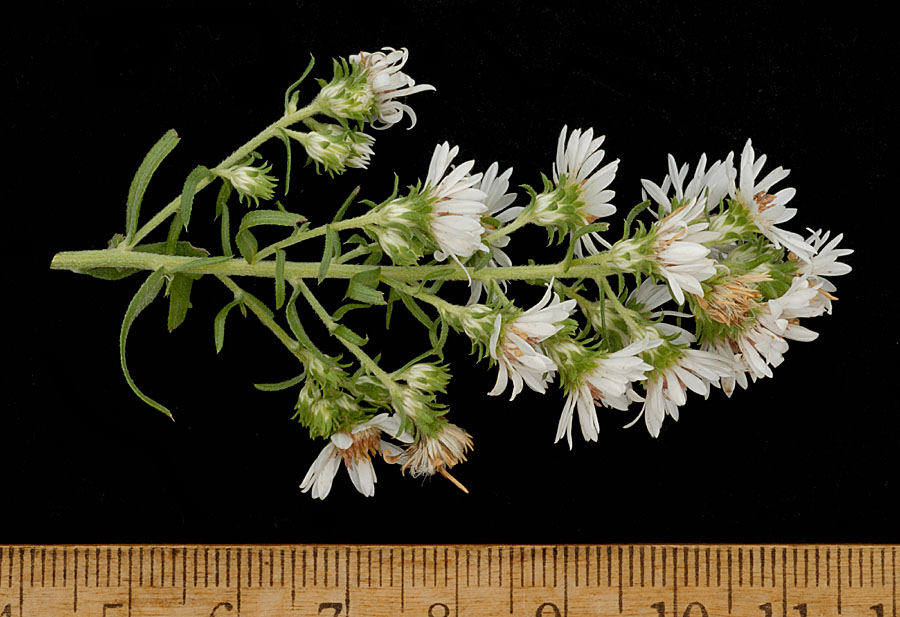
Many-Flowered Aster
Aster ericoides

Many-Flowered Aster
Upper Inflorescence, Side B
Glenburn Regional Park
06-Aug-2007A. ericoides is a member of the Multiflori complex. Associated with this complex are two characters whose states vary independently of each other. These states have been used to subdivide the complex into species and/or varieties. Different authors have done this in different manners. The following tables are a summary of the treatments by Flora of the Great Plains, Flora of North America, Flora of Alberta, and Budd's Flora. Note that Flora of North America has split the Aster genus into a number of different genera; the Multiflori complex is part of the Symphyotrichum genus in this scheme. This web site employs the nomenclature adopted by Budd's Flora.
Stems Arising Singly,
Colonial with Creeping RhizomesStems Arising in Clusters Heads Small A. ericoides
S. ericoides var. ericoides
A. pansus
S. ericoides var. pansum
A. ericoides ssp. pansusHeads Large A. commutatus
S. falcatum var. commutatum
A. falcatus
S. falcatum var. falcatum
A. falcatus ssp. falcatus
| Stems Arising Singly or Stems Arising in Clusters | |
| Heads Small | A. ericoides |
| Heads Large | A. falcatus |
|
Ericoides: Answers to key questions in Budd's Flora and Flora of Alberta leading to this species.
|
|
Aster: Answers to key questions in Budd's Flora and Flora of Alberta leading to this genus. The answers do not match all species of Aster found in the Canadian prairies, but they do match this species.
|